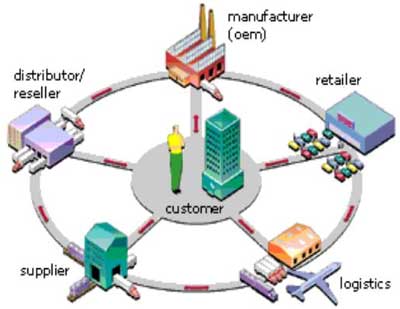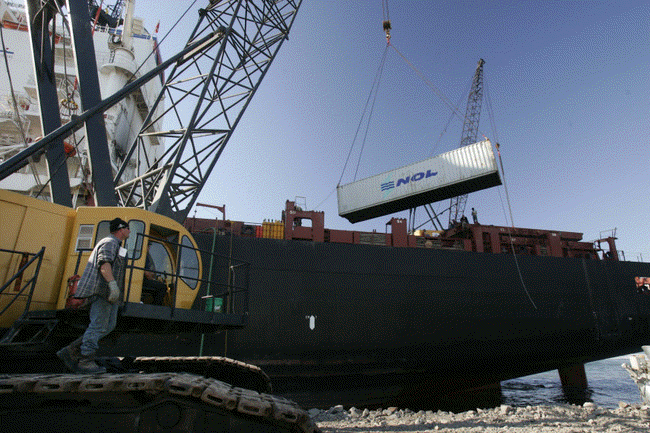Here's a Comment by John Kemp:
LIKE life, commerce goes on, even in recession. People make things, move things, and sell things just in slightly smaller quantities.
Even during the 1929-1933 Great Contraction, the most traumatic downturn of modern times, when industrial output halved in the United States, that still left factories producing 50% of their previous output, shipping it and selling it.
In the current far milder downturn, output and trade are already starting to adjust to the harsher environment. The firming of freight rates last week suggests the continuing operation of the physical economy is starting to put a fundamental floor under some commodity markets.
Since Dec 5, freight rates have witnessed the most sustained bounce since August, led by strong increases for the largest capesize coal and ironore carriers on routes from Australia to China. Gains in the overall Baltic Dry Freight Index totalling 15% (101 points) have been barely perceptible blip after losses of 94% (11,108 points) in the previous six months.
But the lacklustre performance conceals sharp differences in the index components. While rates on the smallest and most flexible supramax vessels, and larger multi-purpose grainandore carrying panamaxes, have continued to soften, rates on the largest and most specialized capesize carriers used to transport coal and iron ore jumped 52% last week.
The usual caveats apply. The dry freight index and its components measure the price for spot charters accounting for only a tiny fraction of the market. They can be distorted by just a handful of distressed vessels searching for a charter, or charterers caught short and hunting for a ship.
Freight rates had sunk to uneconomically low levels that could not cover owners’ operating costs so some recovery was inevitable. Rates of just US$3.90 per tonne on the C5 iron ore route from Western Australia to China, or US$6.80 on the C3 route from Brazil, were never likely to be sustained for long.
But last week’s bounce was really the first, largest and certainly most sustained rise since the onset of the downturn in Aug-Sept. The market is being led higher by continued demand for Australian coal. The sudden strengthening of rates on the Australian routes has coincided with an upturn in port congestion at massive Newcastle loading terminal.
The number of vessels queued outside the port has almost doubled from 24 to 45 in the last six weeks, and the tonnage of coal loading or waiting to load is up from 2.26 million tonnes to 4.30 million tonnes. The average time vessels spend queued up waiting to enter the port is up from 7.8 days to 14.0. Both queues and waiting time are at the highest level for a year
Heavy storms have disrupted coal throughput down the Hunter Valley rail lines and onto vessels in the last month. But weather has not been especially bad for the time of year and the port operators cite the continued strength of demand rather than poor conditions for the worsening delays.
The queues at Newcastle have taken some of the surplus capacity out of the bulk shipping market, helping stabilise rates and begin moving them up as short charterers start to cover near-term shipping requirements. So far the impact has been confined to the specialist cape market and Australian routes. Brazilian routes and the wider market for mid-size and more fungible panamaxes look more oversupplied with tramp shipping capacity, and markets are struggling to bounce.
While China’s demand for coal remains voracious, and is providing some underlying support after recent falls, demand for iron ore has fallen more steeply, and China’s buyers are now exercising their newfound power to source coal and iron more cheaply from Australia rather than Brazil. As a result, rates have risen much faster on route C5 from Australia to China (up 40% in 10 days) than on the competing route C3 route from Brazil (where rates are up only 30%).
In fact, the ratio of C3 to C5 rates has halved from 3.20 to 1.60 in a couple of months, the lowest level for more than eight years.
The ratio is normally very stable around 2.002.50 (reflecting the longer voyaging times from Brazil).
In the short term, rates vary depending on shipping delays at Brazil’s main loading terminals of Tubarao and Ponta da Madeira, Australia’s massive Newcastle coal terminal, and the iron ore terminals at Port Hedland and Dampier in Western Australia. But the freight ratio is strongly mean-reverting: if rates move too far away from this level, capacity is switched from one route to the other until the market converges.
Strength on the Australian routes is already starting to spill across as vessels are reallocated. Rates on the Brazilian’s started to follow Australia’s upward towards the end of last week.
Source: Star Online


 .
.




 .
.